UnderMiner
Silver Member
- Joined
- Jul 27, 2014
- Messages
- 3,940
- Reaction score
- 10,322
- Golden Thread
- 2
- Location
- New York City
- 🥇 Banner finds
- 2
- Detector(s) used
- Minelab Excalibur II, Equinox 800
- Primary Interest:
- All Treasure Hunting
Found this Wolf Safety Lamp at the dump today. This oil-powered safety lamp was designed to prevent explosions in mines by stopping the open flame from igniting natural gas leaks. The Wolf Safety Lamp is credited with helping the early United States economy grow in its early days when coal was the principal fuel for everything. Before the invention of electricity the only way to see in a mine was with a naked flame - the explosions that resulted killed thousands. The Wolf Safety Lamp was designed in the 1880's and produced in Germany and the United States until the advent of electricity in the early 1900's phased it out.
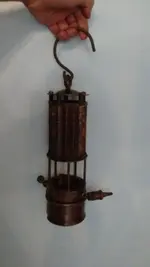
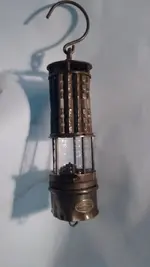
The secret to the lamp's function was the small slatted holes on the top part that prevented the flame from propagating even in the presence of natural gas:
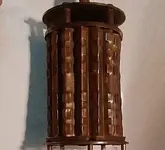
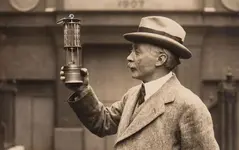
The lamp won a prize at the Paris Exposition in 1900 as noted by this news paper advertisement dated July 1901.
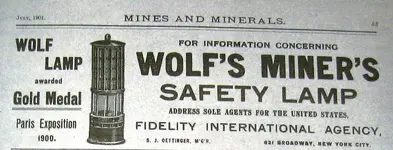
Pictured below you can see the ingenious flint striker ignition mechanism. The flint was operate with a spring-loaded turn key on the bottom of the lamp so the lamp could be ignited automatically with the turn of the key so no naked flame from a match was necessary to light the flame.
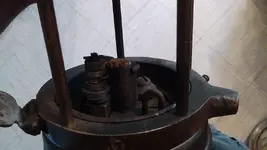
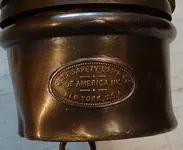
The small hose attachment on the side came standard with this model and was intended to accept a hose that would pump oxygen-rich air into it so the lamp could continue to burn even if there was no oxygen in the mine. The miner would also breath through a hose while using the lamp in this configuration. Pictured is a similar lamp being used in this manner with the hand-operated pump visible in the background:
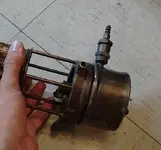
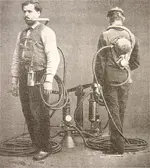

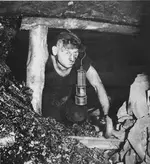



The secret to the lamp's function was the small slatted holes on the top part that prevented the flame from propagating even in the presence of natural gas:


The lamp won a prize at the Paris Exposition in 1900 as noted by this news paper advertisement dated July 1901.

Pictured below you can see the ingenious flint striker ignition mechanism. The flint was operate with a spring-loaded turn key on the bottom of the lamp so the lamp could be ignited automatically with the turn of the key so no naked flame from a match was necessary to light the flame.


The small hose attachment on the side came standard with this model and was intended to accept a hose that would pump oxygen-rich air into it so the lamp could continue to burn even if there was no oxygen in the mine. The miner would also breath through a hose while using the lamp in this configuration. Pictured is a similar lamp being used in this manner with the hand-operated pump visible in the background:





Upvote
18




